|
3.5 stars
A girl who can't die and falls slowly in love with Death? I love it. Add in some gothic manor nonsense and an interesting murder ghost story and this had the makings of something very cool... Characters: ★★★ Pacing: ★★★ 1/2 Setting: ★★★★ Enjoyment: ★★★ Signa's early life has been a rotating door of tragedies and dead guardians. Like the Baudelaire children in A Series of Unfortunate Events, it seems like every single person charged with caring for Signa ends up...dead. Unlike the Baudelaire children, however, Signa's deaths aren't the result of a bad guy. They're a result of... Signa herself. By accident, and by Fate. And by Death, too. Death seems to have taken a very keen interest in Signa due to the fact that she can't seem to die. Broken neck, poisonous berry feasts, unfortunate accidents—nothing phases Signa for long, and nothing keeps her down. Death finds himself interested in her development, and Signa finds herself prickly toward Death, this being who keeps ruining her life. Signa's life takes another turn as we come to meet her. She's 17, her terrible caretaker has died (again) and now it seems she's going to be taken to her late mother's brother, who owns a crumbling estate. The Hawthorn Estate—the perfect gothic mansion setup, complete with uneasy atmosphere, a dying cousin, and a ghost that seems to be causing trouble. What better person to have on the scene of an in-progress murder than the girl who can't be killed? It's up to Signa to solve the case of her cousin's murder before it kills her, and to unwrap the secrets behind her late Aunt's untimely demise. It's a dark puzzle with a lot of twists, and Signa's determined to get to the bottom of it. She refuses to let another guardian die on her watch—Death be damned. Death just might BE damned, actually, because as he finds himself enraptured by Signa and drawn closer into her allure, things start to heat up for his cold, cold heart... Belladonna is the kind of young adult fantasy read with the perfect dose of lush romanticism and gothic atmosphere. It's a decadent treat for the readers who like manor houses, somewhat creepy ghosts, and drama with a capital D. It's also for those of us who love when Death is a character. Especially when Death is a character and emotional invested in the main character. (Too niche? It's me to a T, so I'm guessing there are others out there who agree with me.) I don’t know why I didn’t love this as much as I expected to, but I just… could not get invested. It might have been a case of young adult vs. adult reader and me (the adult) expecting more, unfairly, as young adult books are for young adults. It could also have been the case of "I've read too many stories with X,Y, and Z" and therefore it couldn't hold too much of my attention. Whatever the case was for this particular blend of reader vs. read, I think it's safe to say it was a "me" problem as others seem to adore this story. I will agree with the popular opinions when it came to the deliciously angsty and interesting arc between Signa and Death. That was the strongest part of the novel for me and clearly the emotional heart of the story. I wish we'd spent more time with that storyline and less with the murder mystery/manor characters. It was clear that they were the situational arc that was supposed to be the backdrop for Signa and Death's actual storyline. However, again, small potatoes for those who like those kinds of setups and enjoying long-form descriptions and immersed gothic atmospheres. Gripes aside, I found that the very last chapter peaked my interest... More complex magic is afoot in future installments. I would be curious to see what the author does with the second book.
0 Comments
2.5 stars
A girl made of lies who can see the threads of fate. A prince with an interesting fate for the girl to weave around her. A plot, a curse, and some blood magic. This had all the makings of an interesting spin on the YA fantasy court tropes... Concept: ★★★★ Plot: ★★ Character arcs: ★★ Enjoyment: ★★ Violet is the official Seer of the kingdom. From a child of the streets to the pampered Seer in the tall tower, Violet's rise to riches involved one simple moment: she saw the future and saved the Prince's life. Ever since that fateful day, Violet has done all that she could to keep her position as the powerful court Seer and personal advisor on all things fate to the King. She likes her cushy job, ok? And she's willing to fight tooth and claw to keep it. That fighting instinct is sorely tested with Prince Cyrus. Ever since Violet saved Cyrus' life, Cyrus has been the worst. They're basically nemesis now, with Cyrus hating Violet—her incessant lies to "save" the kingdom per his father's orders are apparently a personal betrayal—and Violet detesting Cyrus for making her daily life as difficult as possible. There's a fine line between love and hate... However, the hatred between these two reluctant coworkers has nothing on the drama waiting from them in this tale. Violet and Cyrus have bigger problems now: there's a curse coming for them both, and whole lot of deadly magic with inescapable consequences. With the fate of the kingdom, Cyrus, and her own life placed in Violet's hands, things are about the get interestingly deadly. Alright, y'all. Let's talk about it. Given my low rating, you can tell that this story really, really didn't gel for me. That was due to multiple different aspects. I thought the fixation on Violet and Cyrus' hatred toward each other was a bit over the top and nonsensical after a certain point. From "I HATE YOU" screaming to passion, this arc was somehow both basic and overcomplicated for me. For me, it reduced both Violet and Cyrus' character development down to this one trope. I also had a hard time with the balance between worldbuilding, plot, and character development. This might have been a “me” problem, but it felt like this story constantly pivoted away from whatever I wanted to have next… When it was time for an action point, we went into a snarky internal Violet moment. When it was time for some character growth between people, it seemed like we jumped into world building descriptions. I don’t know, it was off to me for the entire read. All in all, not a new favorite read for me. But this might find its audience in younger readers less well versed in the genre. I'd recommend this to young tweens and newer fantasy readers without hesitation. 4.5 stars
For those of us who can straddle the lines between dark death, wry humor, and quick fantasy—this one's for us. And for anyone who's ever been interested in the Black Death plague. Concept: ★★★ 1/2 Plot/Pacing: ★★★★ Humor: ★★★★★ Enjoyment: ★★★★★ Cas is on his way home. He's got a lot of PTSD and some new scars. He's the sole plague survivor of a POW labor camp for the enemy. He's also got an interesting and upsettingly new ability to see ghosts of the recently dead. And he's got a horse. (That last one is the most important, as he's also scant broke and is trying to get home.) Cas is dealing with a lot, obviously. The last thing he needs is a random girl stealing his one horse out from under him. Luckily, the girl gets stuck and needs some help—so now Cas has a horse AND and a girl...and still a bunch of emotional baggage. Cas would rather not have two of those three things, but hey, no one's ever asked for his opinion on the matter. Cas is on his way home to his family's city estate and desperately hoping his brother made it out of the plague times alive. But when he gets home and is returned into the royal fold as the official Lord Cassia once more, Cas discovers more things have changed than just his own backstory—the royal court is now in residence at his own family's estate. And they've brought the enemy with them. Now embroiled in an assassination plot, armed with baggage, and working through a bizarre interest in his horse thief girl—who is revealed to be the court's historian AND half-sister to the king, to boot—Cas has a lot on his plate. He'd really just like the quiet life. But needs must, and Cas is nothing if not a wry utilitarian. There's things to be done. Wow. I'd like to start by saying that Year of the Reaper is a book that I should have picked up a LONG time ago. I loved it. The fact that I picked it up at all was by chance—Fairyloot included it in their book box and it arrived on my doorstep. I feel compelled, obviously, to read those books. I would have never picked up the U.S. version based on its artwork... and what a shame that would have been, because this book was my vibe to perfection. Macabre reading fans, rejoice! This novel could have been depressing. It also could have used the Black Death inspiration as a shameless plot device and not done the topic justice. Year of the Reaper did neither of these things. In a true slice of grace, the author managed to write a novel that paid homage to the horrors, grief, and lingering fears of a generation dealing with extensive and unaccountable trauma while somehow maintaining a thread of hope and dose of wry humor. This was so, so deftly handled, I'm a bit in awe considering this novel's standalone status and shorter page count. Pick this one up if you can! It's a gem in the genre. 3.5 stars
An interesting YA spin on the historic true story of the New Orleans Axe Man murders, with some 1918 flu pandemic elements thrown in. Concept: ★★★★ Plot/Pacing: ★★★ Characters: ★★★ New Orleans, 1918. Giana is a teenage Italian American living in the city, plagued by nightmares of her parents' brutal axe murder several years earlier. Her recurring nightmare of that fateful night never changes... until it does. "I'm coming," the dream spells out in blood. As Giana tries her best to ignore her terrifying dream, people are starting to die from influenza. And to make matters worse, the New Orleans newspapers are talking of a deranged killer on the loose. With an axe. Giana's nightmare might be more than a childhood fear after all... With her friend, Enzo, Giana decides enough is enough—it's time for her to confront her past demons by catching this new killer on the loose. Retribution and revenge, all in one. But what exactly is waiting for Giana at the end of this deadly puzzle? Whew, what a doozy of a plot setup, y'all. Don't Go to Sleep was a novel that I was quite excited to read. I'd enjoyed this author's previous book on the horrors of H.H. Holmes and his murder hotel in Chicago, The Perfect Place to Die, so when I heard that they were tackling the Axe Man I signed right the frick up to review this one. I loved the modern take in the American Horror Story TV show (season three is my favorite, where it's New Orleans and Axe Man and witches) and thought this would deliver on more of those vibes. This was a lot of fun. I will admit, I think a portion of this story did not work for me due to its age range and writing style—despite Giana being 17 years old in this story, the writing and emotional palate made it seem like it was made for a younger YA audience. So I struggled to relate to a lot of the dialogue and emotions. As a late 20-something reader, this was a me issue and not the fault of the book meant for actual teens, but it did affect my ability to connect with the characters and larger emotional storyline. I think there's a market for readers who enjoy the macabre history of our American true crime past and are craving more adventure stories like Stalking Jack the Ripper, etc. Don't Go to Sleep is the perfect read for Maniscalco fans—especially the younger ones. Definitely pick this up for yourself or the young historic crime reader in your life! Thank you to the publisher for my copy in exchange for an honest review. 3.5 stars
This has a house vibe, a trapped cat-and-mouse vibe, AND a vampire romance. Say no more. I definitely read the heck out of this and had a fun time. Concept: ★★★★ Plot/Pacing: ★★ 1/2 Enjoyment: ★★★ It's current-day. Vampires have replaced the world of human celebrities and rich people with their emergence unto the world stage in their unworldly beauty. With a global fanbase, reality TV shows, and world news turned toward them, the five official vampire houses exist at the very top of society. Naturally, humans are a part of this capitalist/celebrity food chain—literally. To accommodate the vampires' need for blood and to satisfy the masses of humans obsessed with their allure, the five vampire houses have a system in place for blood donors. You can submit to become a blood donor, get paid for your time, and spend a set amount of time inside the vampire house. The catch? You sign a contract, you can't leave until they let you, and sometimes people don't come back out... Renie Mayfield has just been accepted as a blood donor for the house of Belle Morte. But she's not the typical groupie looking for a blood fix and some dangerous sex. She's looking for her missing sister, June. June disappeared in Belle Morte's house several months ago. And Renie is going to find her. The only problem is, one of the vampires has a special interest in Renie. And Renie can't help but notice him back... Cue the angst, the forbidden romance, and the drama of a locked-house atmosphere... Belle Morte is something you need to have on your radar if you're a fan of the late 2000s and early 2010s vampire teen romance fiction. This book is clearly a love letter to that type of story, and it definitely attracted the right audience—I was a sucker for those then, and I had a nostalgically good time with this one too. Was this amazingly written? Not really. Was this an original plot? Almost no. But did this give vampire fans something fun to read in the current era where vampire romances are harder to come by? Oh heck yes. Come for the fun, not the literary value. Belle Morte is waiting. Thank you to the publisher for my copy in exchange for an honest review. 3 stars
Art, pain, and discussions of friendship bonds and finding your individual voice collide in this new graphic novel for young readers. Concept: ★★★ Plot/Pacing: ★★★ Characters: ★★★ A quick disclaimer and a content warning: This young graphic novel deals heavily with discussions of suicide. Please be warned before proceeding with this review or others on this book. Slip follows the summer journey of Jade, a young artist about to go off on a summer art program at the Art Farm. Right before Jade leaves for the camp, she receives the news that her best friend, Phoebe, has attempted suicide. Phoebe is immediately sent off for treatment and help, and Jade is still sent to art camp. Now separated from Phoebe and dealing with the complex feelings of being on intimate sidelines of such an event, Slip delves into the tangled ball of yarn of friendships, suicide, internal healing, and growth. And, to make matters even more interesting, Jade's art pieces start to come to life at the camp—forcing Jade to confront a lot of her internal feelings around Phoebe, life, and what comes next. I thought this graphic novel had a wonderful concept. The idea of a suicide impacting the social network around the affected individual—like a stone dropped into a pond, rippling outward—was a great topic, and having it conveyed to a younger audience even more so as this is something that affects groups of all ages, not just adults. However, I must say that I felt a lot of mixed feelings while experiencing this story. Jade's self-absorption over the impacts of Phoebe's decision on Jade's own life read as selfish to me as opposed to caring, and while this was clearly NOT the author's intention, it then started to feel to me that the story was sidelining the real truth of Phoebe's story and subsequent trauma and somehow prioritizing the selfish angles of Jade as the "hurt best friend." It was always going to be a tightrope to balance this topic, and even if it was done flawlessly it might have continued to feel uncomfortable, but still... it struck the wrong chords with me. In addition to the handling of the sensitive topics at hand, I also thought it was an odd artistic choice to have a very visual arts-themed graphic novel told entirely in grayscale colors, with an occasional pop of pink accents. This would have had such a different tone if done in full color, and might have more accurately represented the vibrant arts camp setting. I am assuming the artist's intention was to have it gray to represent the very heavy topics at hand, but to me personally it felt off. Thank you to Algonquin Books for Young Readers for my copy in exchange for an honest review. 4 stars
A fantasy for the budding environmental scientists out there. Lots of fun! Concepts: ★★★★★ Plot/Pacing: ★★★★ Characters: ★★★ I wondered when we'd start to see climate-focused middle grade reads saturate the shelves. The Tiltersmith joins the wave of budding stories both fantastical and contemporary centered on our environment—and it managed to do that while ALSO being fun. A delicate balance to walk. It's supposed to be spring in New York, but as March 21 rolls around the streets are still covered in ice and snow. Winter's not letting up. For four kids in the city, this stinks on multiple levels. As I curled up with this story, it was early April, supposedly spring on the calendar—the winter vibes out my window begged to differ. The snow on my ground felt like a personal grounding to this tale. I, like our protagonist's teacher Mr. Ross, immediately jumped to climate change as an answer for my snow woes. But for Edward, Brigit, Feenix, and Danton, four classmates with a lot of smarts, they think something else is afoot and they're determined to prove it in their own unique ways. (Edward, the scientist covered in experiments, was a personal favorite of mine to read.) And when someone "off" with the name Superintendent Tiltersmith shows up, the foursome are in for a wild, wild ride involving magic, science, and the planet. Y'all, I thought this story was so precious. It's not every day that you read a tale for young readers with a distinctly environmental twist—unless there's a ton and I'm just living under a rock, which is possible—and The Tiltersmith incorporated those elements in such a blatant and yet endearing way. As an adult, I found some portions to be a bit on the nose, but I had to keep reminding myself that this was meant for younger audiences who might need the more heavy-handed approach. A fun and engaging read to share with the young scientists and explorers in your life! Thank you to Algonquin Books for Young Readers for my copy in exchange for an honest review. 4.5 stars
A mirror looking back at us with a kinder, hopeful light. This feels like the most relevant of fairy tales and the kind of story I'd love to hear told around the coffee table on a lazy afternoon. Concept: ★★★★★ Pacing: ★★★ Sense of storytelling: ★★★★★ What does it mean to be a neighbor? This story is about an Ogress. (But maybe she's not who you think she is.) This story is about a Dragon. (And maybe he's exactly who you think he is.) This story is also about a town fallen on hard times, where trust and kindness are steadily withering away with each hotter season, and the town's livelihood is dying a slow death as a result. This story is also about a group of orphans, who are able to look at the world with the clear-eyed gaze that only the most honest of children can use. The Ogress and the Orphans is a parable for our times—as lofty as that sounds. Timely, yet timeless. About us and yet not about us. For us adults reading this, this story is going to be a lancing of the boil (whether you're ready for it or feel that way is up to you, but it definitely was such for me). We've experienced so much ugly in these past few years, and our souls are tired. We wonder if there is any hope for the younger generations in this reality where facts are apparently subjective and the concept of kindness toward those around you seems like an alien concept. What hope can we have when those in power try harder and harder to focus a polarity in the culture in order to inflate their egos and bank vaults? How can we record these thoughts and spit them back as something useful and fostering of growth? Kelly Barnhill's Ogress and the Orphans is one such answer. Barnhill wrote this novel during the last few years and that shows—if you're an American, you can see the players behind their fairy tales masks. Her thesis question of "What is a neighbor?" is clearly playing with concepts that have been bullied and broken and abused in the political and social arena for years now. But even for the rest of us, and especially for the children, this fable exists to grow love and foster kindness. I normally read harsher things, darker things, so maybe my review will be an odd duck for those who follow me for those other books. However, despite this novel's length—it was a bit long, and for an adult it will feel like something shorter that was drawn out for younger minds--I think it's worth a try. Especially if you're in need of something light amidst all of this darkness. Thank you to the publisher for my copy in exchange for an honest review. 4 stars
Ticking clocks, German folklore, and classic storytelling with a self-aware edge...this was a delight. Concepts: ★★★★ Plot/Pacing: ★★★ Characters: ★★★★ Y'all, I have been enjoying the heck out of Algonquin's middle grade line of novels these past few years. There is something about the niche of fantasy middle grade coming out of this publishing hosue that I just really, really enjoy. They tend to have that extra something, that extra oomph of world building mixed with lyrical folktale-esque writing structure, and they tend to have writer's humor mixed in with the narrative. I love it every time. The Counterclockwise Heart was no exception. In this tale we have Alphonsus, a prince with a ticking clock where is heart is supposed to be. Raised by his adoptive mother, the empress of the land, he's told to hide his clock heart from the world and to ignore the prophecy that was attached to his newborn body when the empress found him one night in a gear-filled bassinet. The counterclockwise heart... Of course, one day Alphonsus's heart stops ticking clockwise like normal. It starts winding backwards, counting down. But to what, and why? In another thread of the story we have Esme, a young girl from the magical community of Hierophants. She enters Alphonsus's kingdom in search of Nachtfrau, a powerful sorceress. Esme has her own reasons for searching for Nachtfrau, and she has some fate-tied words of her own. As Alphonsus and Esme twine closer and closer, their fates begin to unravel as well. The clock is ticking... literally. This was such a fun ride! With the classic spins of a good middle grade adventure folktale, The Counterclockwise Heart surprised me with its self-aware narration, clever twists, and ultimate sense of grounded Germanic-based folktale. It was just a good blend. I do think that this novel will appeal to certain types of fantasy readers over others--in particular, there were some darker themes and meandering elements to the storytelling that I think are dependent on personal taste. It worked for me, but I'm an adult fantasy reader who likes those things! Recommended for fans of The Oddmire, Laini Taylor's writing style if she wrote a classic fairytale, and Seanan McGuire's obscure short stories. Thank you to Algonquin for Young Readers for my copy in exchange for an honest review. 3.5 stars
A much-needed breath of fresh air within the YA fantasy "there's a magic world among us!" trope, with a lot to say and a lot of heart to give. Concepts: ★★★★ Characters: ★★★★★ Plot: ★★★ "Moms raised a diamond..." Rue comes from the East Row, where the families look out for each other and happiness, love, and loyalty bloom amid the concrete. She and her half-sister, Tasha, live with their mom and are doing pretty well. Until, that is, their mom is shot on their doorstep and life as Rue knows it ends. Suddenly, Rue's absent dad arrives on the scene with a puff of magic (literally) and whisks Rue away to the magical island of Ghazan. Where apparently a land of magical, gray-tinged white people reside, and Rue and her father are the only brown-skinned people in the whole joint. Yes, it's just as weird as you're thinking...And Rue's having none of it. Rue's pissed. Dragged away from her sister, reeling from her mom's murder, NOT on board with her no-good father's weird return, and now struggling with a magic she didn't want and a people she doesn't understand.... it's a lot. And oh, there's also some serious sh** going on and more people are turning up in trouble. ...And diamonds never crack. Told through a past/present split timeline and through Rue's intensely personal point of view, Wings of Ebony was a unique voice in the realm of today's young adult fantasy and really highlighted a lot of the internal/external issues surrounding Black teens today. And it was a damn fun time too, that also needs to be in there. There's a lot of "real world" involved right in with the fantastical, so do go into this novel with the expectation that it's not a high fantasy/magical school concept—Rue is back and forth within the magical and non-magical scene throughout the entirety of this book and so are the rest of the characters. In truth, I thought that Wings of Ebony stood apart from many other fantasies in its tropes BECAUSE of the intermeshed realities of Rue's ties between the magical community and her home of the East Row. There was no clean break, no escapism, no forgetting your roots to embrace the new like we've seen done before in so many other (let's be honest, traditionally white) books. I know my voice in the discussion as a white adult woman might not add much to the discussions of this book (and frankly, that's fine - this was not a book meant for me or traditionally white audiences, I do recommend checking out the other wonderful reviews coming from more relevant voices) but I do think it was truly awesome to read a book that was clearly for young Black women and teens that didn't cater to white audiences in terms of its dialogue, plot points, or references. There was a lot outside of my personal experience in Wings of Ebony, and to be honest I loved that, Rue taught me things through the page just by her experiences and how she framed her thoughts to the other non-Black characters in this book—but that teaching wasn't her job, or the novel's job, to do that so I'm taking those points as a good personal side benefit, not anything that I came to this novel with as an expectation. The only caveats to Wings of Ebony in terms of its technical structure, for me, was its pacing. At times, I really did struggle with the flow of the past-to-present timelines and in general found it easy to pick up and put down this book because the flow from action point to action point felt uneven in places. But those are quibbles, this was still an incredibly solid and extremely unique debut. |
Amy Imogene ReadsJust someone looking for her own door into Wonderland. Categories
All
Archives
March 2024
|
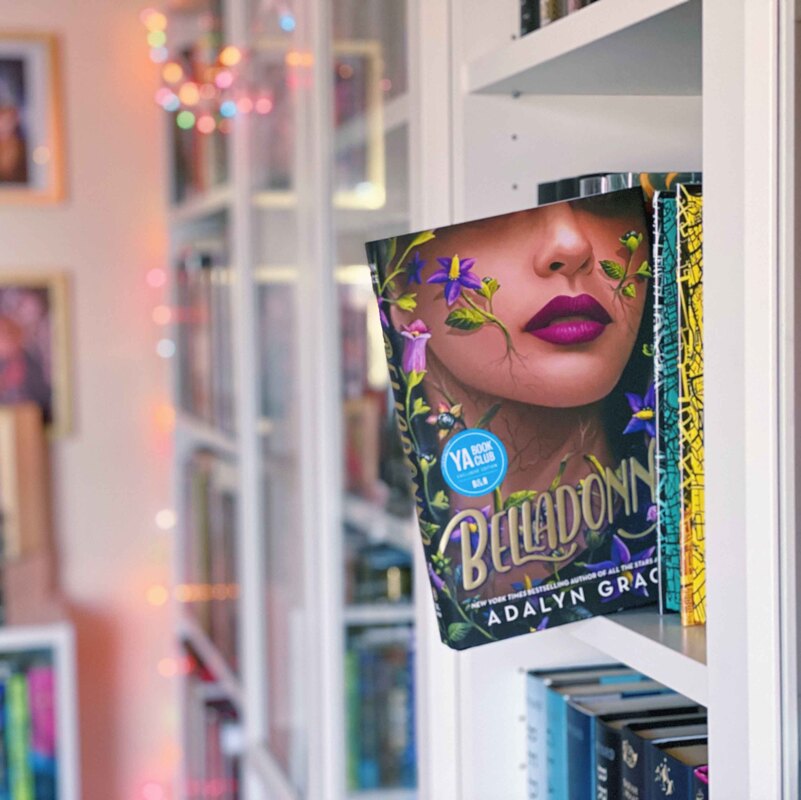
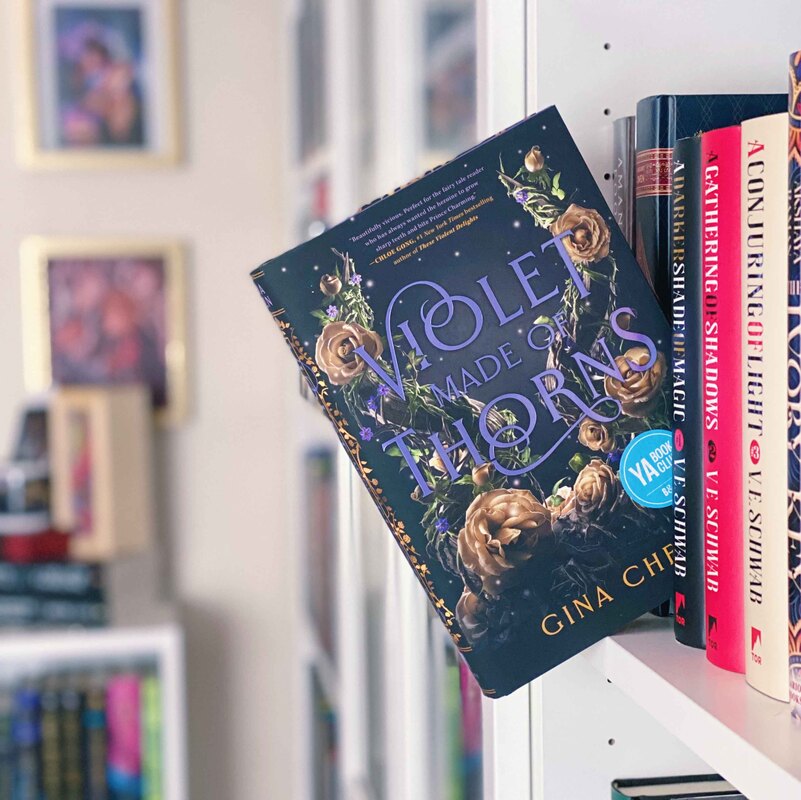
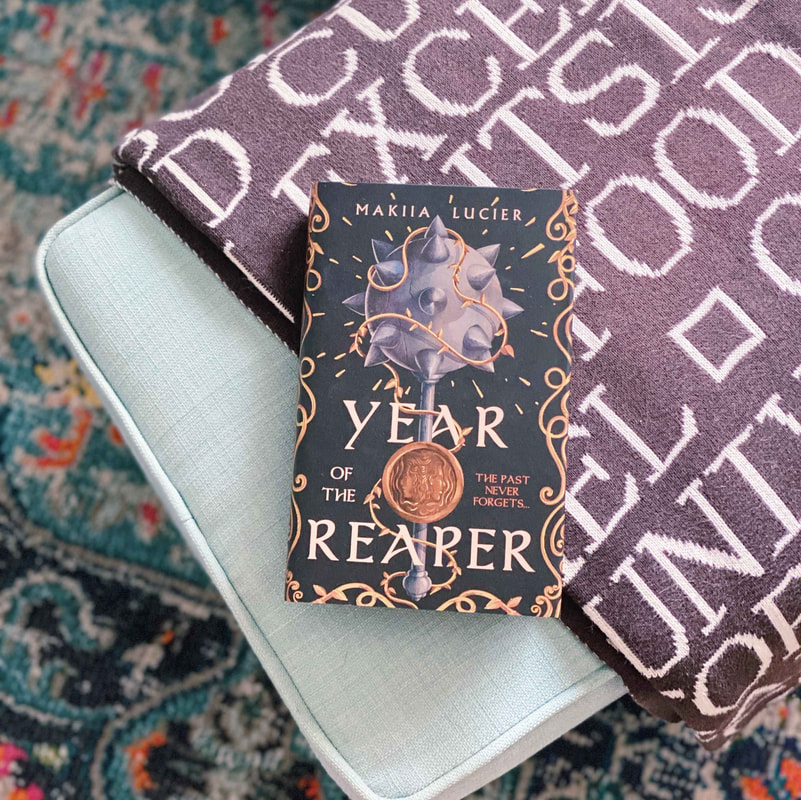
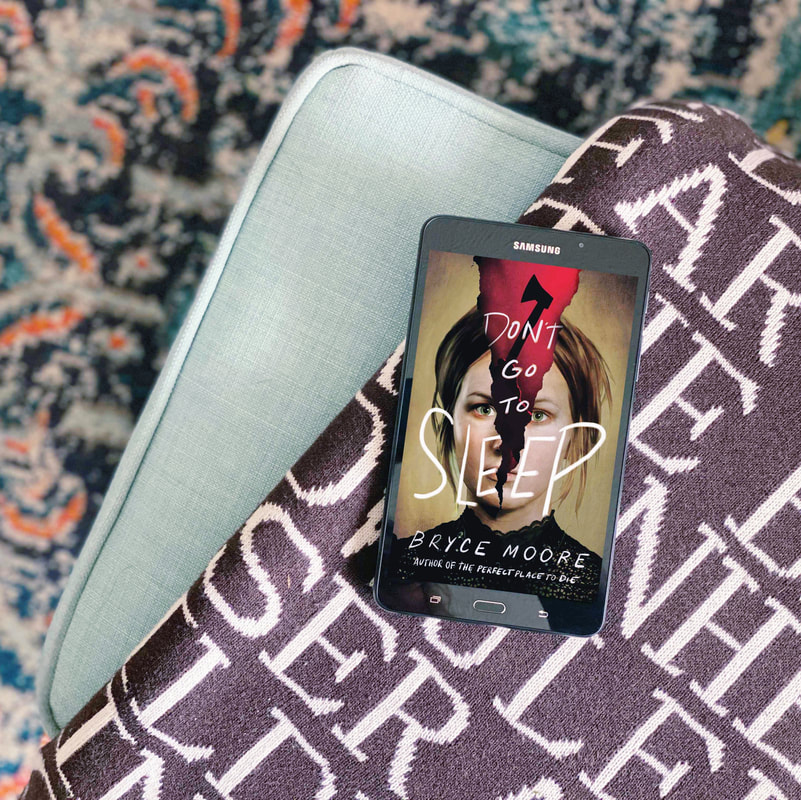
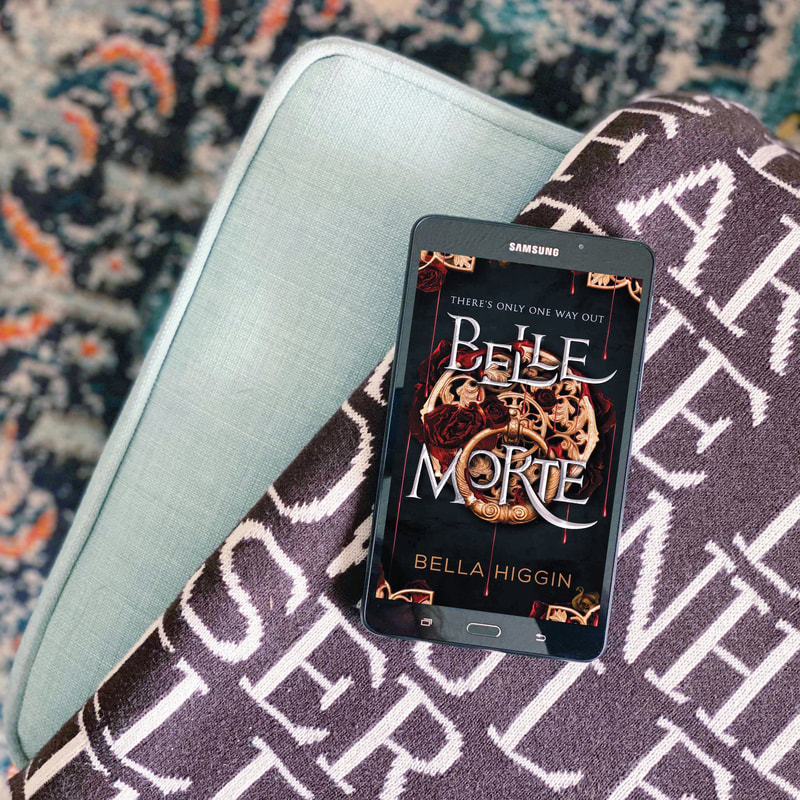

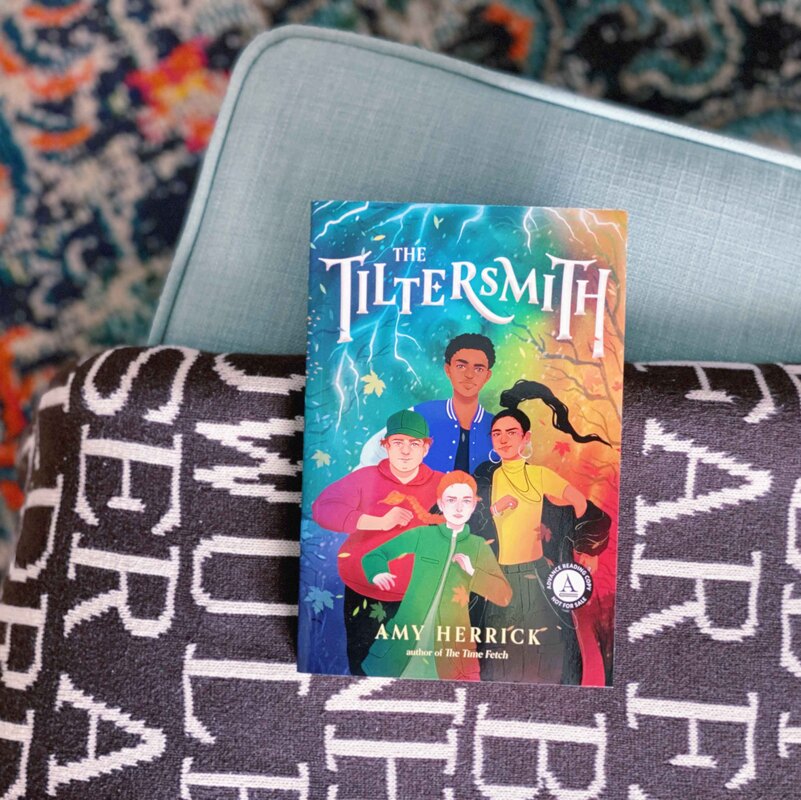
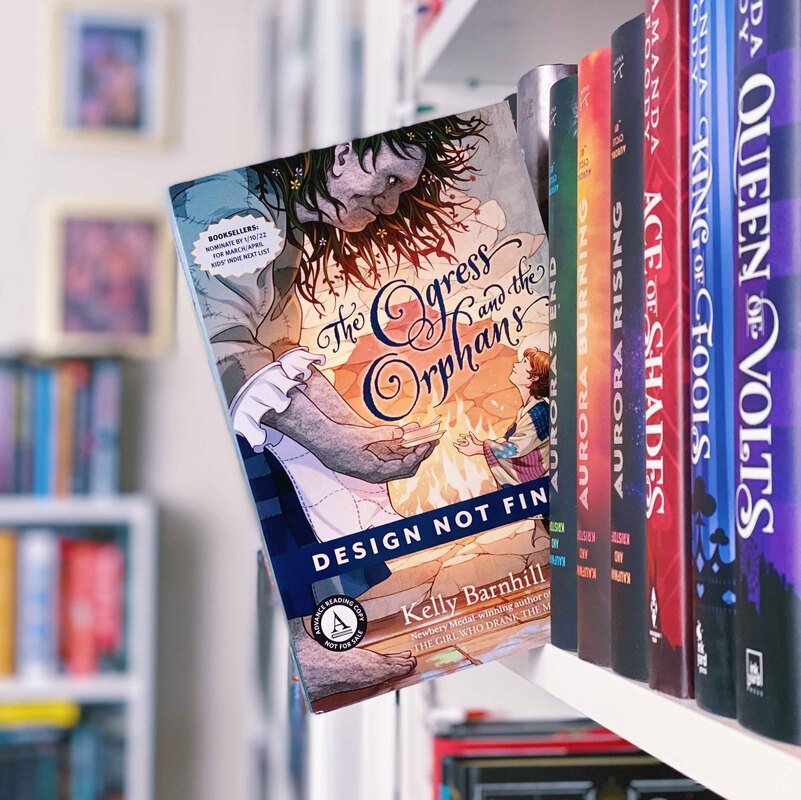
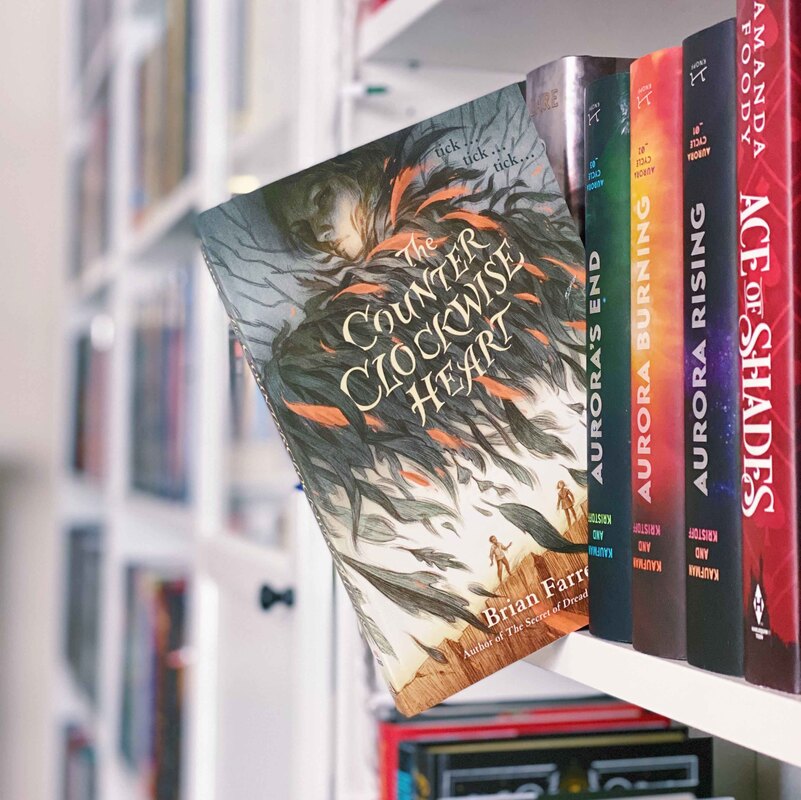
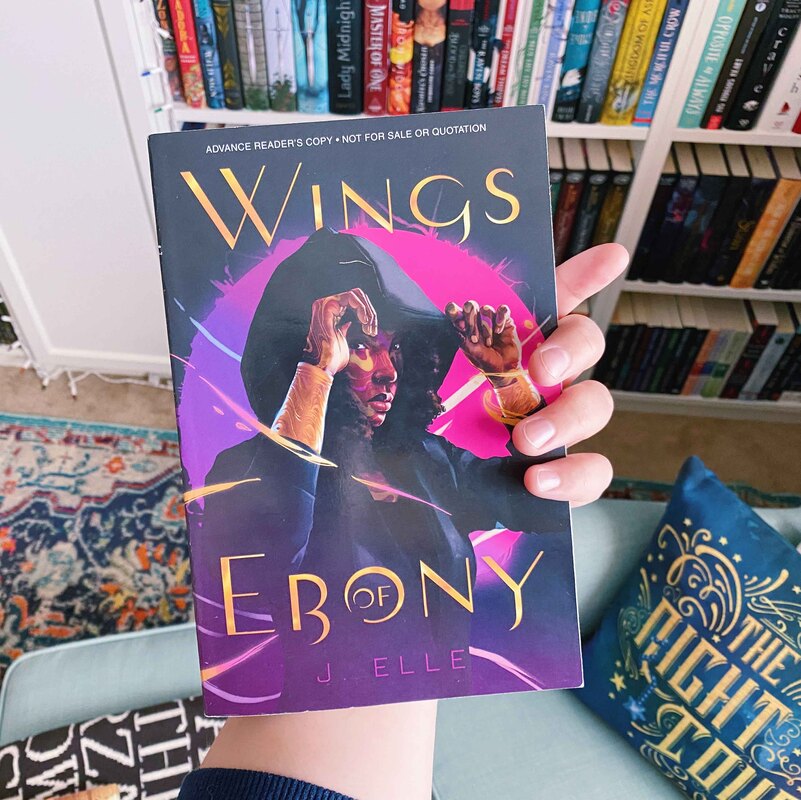

 RSS Feed
RSS Feed
